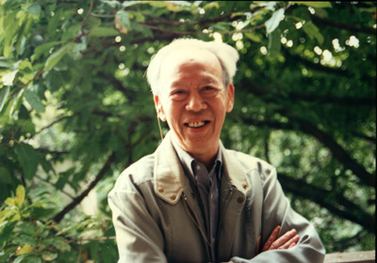 | ||
Born 1915 (age 91), Guangzhou, China Died 2006 (aged 91) Similar Lin Fengmian, Liu Haisu, Liu Guosong | ||
Liao Bingxiong (Simplified Chinese:廖冰兄, pinyin: Liao Bīngxiōng) was a Chinese political cartoonist, painter and calligrapher. He remained active from 1934 until he gave up in 1995 (with a 20-year break between 1957 and 1978). Liao is widely regarded as one of China's foremost political cartoonists. Liao integrated folk art; Cantonese rhymes and idioms; and woodcut into many of his cartoons.
Contents
Biography
When Liao Bingxiong was born, he was named Liao Dongsheng (Simplified Chinese:廖东生, pinyin: Liao Dōngshēng''), i.e. "born in the East". However at age 18, he wrote an article for the newspaper Cheng Bao (诚报 – Honest report) in Guangzhou, and chose to sign the article Bingxiong - i.e. "brother of Bing" after his little sister Liao Bing. As an explanation, Liao Bingxiong is said to have asked: "Am I not Liao Bing's brother?"
Early in his life, he worked as a teacher. He drew anti-war illustrations during World War II, and later joined a comic artists organization in Hong Kong. In 1946 his satirical Spring and Autumn in the Cat Kingdom debuted in Chongqing. In the early 1950s, he returned to the mainland, where he drew children's comics.
Over many years, in a long series of cartoons and calligraphic pieces, Liao documented corruption and abuses of power under the Guómíndǎng (Nationalist Party); the Japanese occupation; the regime of Máo Zédōng (毛泽东); and many subsequent events. Liao learned to draw by copying, but he never received formal training in art. For this reason he called himself yěshēng Dongwu (野生动物), "a wild animal.”
Liao Bingxiong died in 2006, at 91 years old. A gallery is named in his honour at the Guangzhou Museum of Art, where some of his works are on display.
Style as a cartoonist and calligrapher
Liao Bingxiong said: "I was sad for the good people who have been victimized. I was angry against the evil people who hurt others. That was why I drew mostly sad and angry cartoons...."
Early in his career, Liao was concerned that his drawings needed to be understood even by those who could not read – so he mainly drew cartoons without any text. In 1938, inspired both by traditional Chinese approaches and by the Mexican artist Miguel Covarrubias, Liao extended his repertoire, and began experimenting increasingly with color and form. Liao's calligraphy has been described direct and "vulgar".
Another early twentieth-century Chinese political cartoonist was Fang Cheng. Today, politically active Chinese cartoonists and artists include Badiucao, Cheng Tao, DSX, Kuang Biao, Rebel Pepper, Xu Pengfei and Zhu Senlin.
